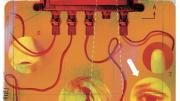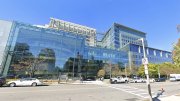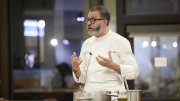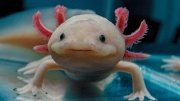In the early 1960s, Harvard Medical School (HMS) researchers (and future Nobel laureates) David Hubel and Torsten Wiesel began a series of landmark experiments investigating the effects of experience on the brain. In one trial, the pair closed a kitten’s eye at birth to measure the effects of sensory deprivation. After six months, they reopened the eyelid and found that the animal was almost completely blind in that eye.
“They realized that even though the visual system is wired up from birth, it is experience that affects the development of synapses in the brain,” says Michael Greenberg, Pusey professor and chair of neurobiology at HMS. The connections in the brain that normally would have been created as a reaction to outside stimulus went unformed, leading Hubel and Wiesel to conclude that the brain is literally shaped by our experiences.
Greenberg’s lab is taking their research a step further, focusing on how experience affects brain development on a molecular level and identifying the chemical mechanisms that guide the brain’s growth. One mechanism they’ve recently discovered involves a new class of RNA—called enhancer RNA, or eRNA—that is created in neurons in response to stimuli and could prove instrumental in brain development, a finding detailed in the journal Nature this spring.
Greenberg’s research began more than two decades ago, when he discovered that genes were often turned on as a result of experience. This occurs when, in response to stimuli, signals that pass from one cell to another make their way to the receiving cell’s nucleus, where they instruct the cell to turn on various genes. Since these initial findings, Greenberg and other researchers have identified hundreds of genes that are activated in response to neural activity. Today, his lab focuses on identifying new features of gene activation and determining how the program varies in response to different stimuli.
In a process detailed in the Nature paper, Greenberg’s team mimicked a neural stimulation in the brain cells of mice to trace the gene activation program’s effects. Using advanced sequencing technology, the team discovered not only that stimulation activates specific areas of a cell’s DNA that control the expression of the genes—called “enhancer regions”—but that these areas also create strands of eRNA potentially vital to creating new connections between neurons.
“Essentially, we think learning requires ‘turning on’ these genes, and the enhancer regions are contributing to that ‘turning-on’ process,” Greenberg says. “And [located] at the enhancer regions are these new eRNAs that were unexpected and unknown.” The next step, he says, is determining the exact functions of the eRNAs. Given both their quantity and their ability to affect genes that are already widely believed to affect memory and learning, he expects they will prove essential for learning. Eventually, he says, they could be helpful in everything from athletics (muscle memory) to Trivial Pursuit (declarative memory).
“We want to understand this gene programming in its entirety and how it varies from one human being to another, because we think it’s going to give us some insight into what creates differences in terms of human cognition,” he explains. Deciphering these enhancers that are regulated by experience could provide a new place to look for answers.
Advances in other fields may also aid new discoveries about the root causes of some of the more common cognitive disorders, Greenberg adds. Citing a recent development in stem-cell technology that allows researchers to reprogram any human cell to become an embryonic stem cell, he says it might one day be possible, for example, to take skin-cell samples from two children, one with and one without autism, and then generate an embryonic stem cell from each. If those stem cells were then “directed” to form neurons, they could eventually be stimulated and then sequenced to find out what differences occur in the gene expression pathways. “It seems pretty fanciful,” says Greenberg, “but that’s the kind of [research] that is happening.”









